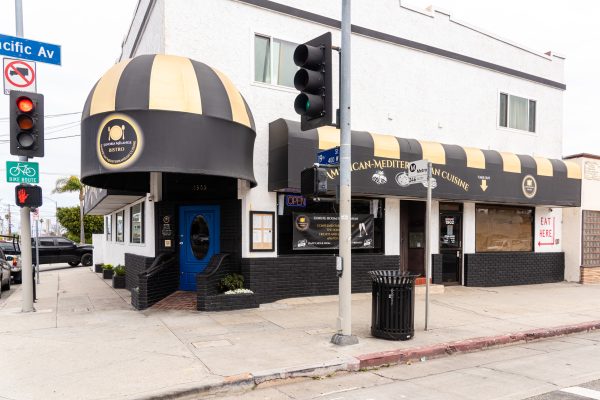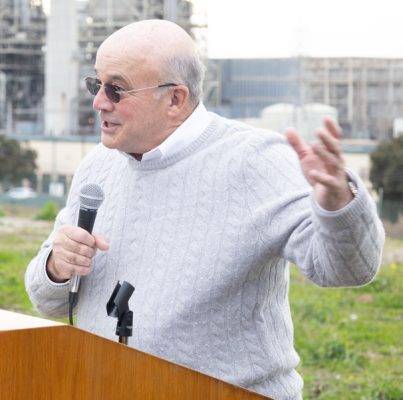The Redondo Beach Unified School District’s Board of Education Tuesday night voted unanimously to place a $63 million bond measure on the November ballot which would largely take RBUSD off the electrical grid by making every school solar-powered in addition to providing other new technologies inside classrooms.
The district, after five consecutive years of drastic state educational funding cuts, reluctantly decided to go back to local voters four years after passing the $145 million Measure C. That bond measure paid for the complete overhaul of the Redondo Union High School campus and upgrades to all district schools. The newly proposed bond measure is intended to propel RBUSD classrooms into the 21st century.
“We need to move forward, and make sure we make the investment to start making a serious change to transform the way our students learn – to leave the industrial revolution in the past and move forward and change the way learning goes on in our school system,” said School Board member Drew Gamet.
The bond, if passed, would also indirectly help the district address an ongoing $2 million shortfall in its $67 million annual budget. Though bond monies cannot be directly used for general fund purposes, the district would save an estimated $500,000 to $700,000 annually in utility bills that are paid for from its general fund. Additionally, the bond would help pay for district technology needs ranging from computers and software to cameras, printers, and its student information system.
All totaled, the district estimates it would achieve a $2.2 million saving from its general fund annually during the first ten years of the 20-year bond, and $500,000 annually for its remainder.
The board is attempting strategically plan how to market yet another bond to an already education-tax-heavy ballot and money-strapped community.
“The time for leadership is now,” said school board vice president Laura Emdee. “[We] need to be prepared for state funding situations and need to be proactive instead of reactive on this thing.”
The bond measure will be on the same ballot as two state-wide education funding initiatives. Gov. Jerry Brown’s Proposition 30 would raise $10 billion by increasing the state’s sales tax .5 cents for four years and raising income tax on annual earnings over $250,000 for five years. Another state initiative, civil attorney Molly Munger’s Proposition 38, would increase public education funding by $7 billion a year by increasing income tax for 12 years.
“My proposal is straightforward and fair,” Brown wrote in an open letter to the people of California in December 2011. “It proposes a temporary tax increase on the wealthy, a modest and temporary increase in the sales tax and guarantees that the new revenues be spent only on education.”
Part of the school board’s concern is that with so many proposed taxes for education, voters may overlook one or all of the ballot initiatives, forcing RBUSD into yet another financial quandary. School board members said they cannot depend on the state initiatives passing but must prepare for a worst-case scenario.
“We’re in charge of making sure the district is financially stable and our constituents expect a top notch school district,” said Emdee. “We’ve eaten away our reserve to absolute minimum and can no longer absorb the funding inconsistencies.”
According to Emdee, if the governor’s initiative does not pass, the school district can expect $3.8 million in cuts, which she said is equivalent to losing 19 school days. If the initiative does pass, she said that they are largely in the same spot regarding future budget uncertainties.
“We’re just hanging on, waiting for the next wave to break,” said Emdee.
Embdee also said even if the state tax initiatives pass, RBUSD will not see the funding added to the district’s coffers until the end of the 2013 school year.
“We’re kind of screwed in 2012-13,” said Emdee. “In the meantime we have to deal with the shortfall and wait for the money to come in. So our best-case scenario for 2012-13 is flat funding and we’ve lost $6 million over the last four years, so [there’s] very little fat to trim and no reserve to create a 21st century classroom.”
If the initiatives don’t pass and a bond is not floated, there could potentially be a month less school on RBUSD campuses, greatly-increased class sizes, or both. The school district is currently trying to coordinate with its employee unions to determine a worst-case scenario trigger cut. In past years they have come to the table to agree upon up to four furlough days, but that option was never triggered.
This year is a different situation altogether.
According to Monica Joyce, president of the Redondo Beach Teachers’ Association, the association does not oppose the technology bond, but instead are putting their focus and energy into the efforts of Proposition 30 in November. The association is more worried about the loss of school days than upgrading technology.
Board member Todd Loewenstein emphasized the importance of the bond’s cost-saving elements.
“This is a very difficult sell,” Loewenstein said. “[It’s a] very nuanced thing because it’s not something you can see or touch, and we’re spending money to save money and that’s a hard thing to communicate to people. We live and breathe this; most people are not paying attention. They send their kids to school in the morning, they help with homework, they participate in PTA, but they don’t deal with school finances.”
Gamet said he isn’t excited about asking the voters for more money during an economic downturn. But he said the urgency of preparing students for jobs of the future makes the bond necessary.
“Hopefully now we can go forward to the next thing and give our students the tools to prepare for jobs that don’t yet exist,” he said. “I can get excited for that.”
Early indications are that voters will support the proposed bond measure. In May, the district commissioned a survey in which 52.8 percent of prospective voters said they would support a bond measure – slightly below the required 55 percent threshold for approval – with an additional 6.3 percent potentially leaning yes and a 29.3 percent voting no. The same survey found 52 percent approval for parcel tax, well below the 66.7 approval required.
The bond, if passed, would cost voters an approximate $24 per $100,000 assessed value of their homes.
“It’s minimal for what we’re going to get,” said board member Jane Diehl. “I think it’s something that we’re doing [that’s] proactive in trying to bring money back into the district to take care of the $2 million loss and a possible $3.6 or $3.8 million [loss] in November, if not more, because we don’t know what’s going to happen.”
“We need everyone on board to make it work,” Emdee said. “And if we work together we can make sure Redondo students win.” ER








